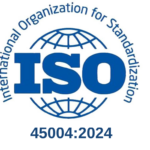One of the key duties placed upon the WHS Officer(s) of an organisation is to “ensure that the person conducting the business or undertaking has available for use, and uses, appropriate resources and processes to eliminate or minimise risks to health and safety”. Typically, these resources come in the form of financial resources (allocated budgets, monies and equipment) and human resources (both quality and quantity of personnel to complete the activities of the WHS function, as well provision of related training).
Getting suitably qualified and experienced WHS people to fill these roles, however, is proving difficult for a lot of organisations in the current employment market. And if you are in a rural or remote area, this can be extremely challenging with some WHS roles currently remaining vacant for months on end.
There are many reasons why this is the case at the moment, including:
- The July 2023 update from the Australian Bureau of Statistics currently has Australia’s unemployment rate at 3.5 %. While not a historic low, the unemployment rate coming out of COVID has been trending downwards and is comparably low. A quick glance at SEEK reveals there are currently over 5,500 job opportunities for WHS-related jobs around Australia. This number continues to grow as organisations recognise their duties for WHS and compliance with legislative requirements.
- Although the employment demographics tell many stories, one that is universal across all industries is that younger people are changing jobs more often and staying long-term with one employer less often.
- There are not many full-time WHS roles based in rural and regional Australia, so many qualified and experienced professionals seek employment in the major cities, leaving voids in local job markets.
- Furthermore, there is no doubt that the remuneration for qualified and experienced WHS professionals is higher in the cities than it is in the regions, and this is contributing to longer-term vacancies in regional locations.
Muddying the water somewhat is that, to be employed in a WHS-related role, it is not essential to have a WHS-related qualification. So where does this leave the need for organisations to both “ensure” and make “appropriate” resources available?
Potential solutions here could include:
- Flexible employment arrangements such as job-sharing, which allows for the WHS function to be shared with another organisation or within another department or individual internally.
- Greater use of Health and Safety Representatives (HSRs) to perform routine safety tasks such as WHS inspections, risk assessments and lower-level incident investigations.
- Looking longer-term to train up HSRs or other interested internal resources (e.g. Training or HR) to have then ‘grow into the role’.
- Re-engaging with recent retiree WHS Advisers to provide flexible and short-term support.
- Use of self-help technology solutions to complete routine safety activities such as worker/contractor inductions, logging of WHS incidents, and generation of WHS statistics and reports.
One important consideration for organisations is that when managing high and extreme WHS risks particularly, expert advice should be sought. Relying on advice for these critical risks by WHS personnel just learning their safety skills may not be enough to meet the “ensure” and “appropriate” definition tests.
Leadership and commitment to WHS at the highest level within an organisation is another essential part of ensuring appropriate resourcing is maintained. It is a challenging job market at the moment, so organisations need to be innovative, flexible and committed to making their WHS resourcing a priority.
Please contact QRMC for more information or assistance.











